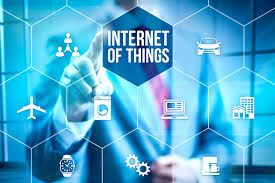The emerging trends you need to integrate into your 2018 plan
We are through Q1, and top companies have the habit of starting to plan for the next year right from Q2. If you have initiated planning your marketing strategy and budget for 2018, be prepared to face questions regarding tactics you are opting to use that would go best with most of your customers. And most importantly, which tactics can result in the most efficient conversion.
To plan a top-notch marketing strategy for your business in 2018, go through the seven trends explained here and incorporate them in your planning process. From personalization elements and mastering micro-moments to moving visual and analyzing the authentic data, we will go through all the best strategies for acquiring leads, conversions customer connections and engagement.
incorporate them in your planning process. From personalization elements and mastering micro-moments to moving visual and analyzing the authentic data, we will go through all the best strategies for acquiring leads, conversions customer connections and engagement.
1. Master Micro-Moments
Mobile gadgets have proved to be a major influence in customer interaction and engagement with brands across the globe. But the surprising thing for most people is the concept of “micro-moments”, which has powered the shift to mobile phones. From long-term goals such as planning to purchase a home, or something as small as acquiring a quick grocery from the nearest store or even locating the ingredients of a dish from your phone, etc., countless of these micro-moments stimulate the impulse to reach out for our mobile phone.
As per Think with Google, micro-moments are highly critical and evaluative touch points where customers expect brands to cater their needs with reliable information, regardless of the time and location.
Whenever a customer feels the need to inquire about something, an astounding 96% of users reach for their smartphones to conduct the required research at that very instant. Only successful brands have the tendency to correctly anticipate and address the exact micro-moment needs by providing the right information at the right time to customer in need.
A useful, quick and one-touch access to the needed information becomes the basis of acquiring customer trust and building long-lasting relationships.
2. Visualization More Important Than Ever
For all the exciting and informative things founds online, whether it is a couple of kittens playing, a baby laughing, or a top commercial featuring a popular model, there is always an element of video. With a video, people tend to accept and attach on a much deeper level due to the usage of visually-rich and interactive elements depicting a proper message or story. And as a consequence, audience is tempted to take considerable action in terms of likes, sharing, etc.
With time, brands have been able to capitalize on the introduction of highly-engaging video features on different social media platforms like Facebook, Twitter, Snapchat and Instagram.
For this trend, we are going to focus on video aspect only since businesses are seizing the opportunity to differentiate their brand in the competitive industry.
Mobile users are tending to spend more time than ever with their smartphones, with the excitement to watch videos online being proportionate as well. It is clear from the following stats that online video is growing rapidly in popularity.
- YouTube registers more 18 and above years-old audience during peak TV hours than any cable TV network.
- Advertisers on prime time broadcasting TV could gain 56% more audience of 18 to 49 years-old through advertising on YouTube.
Plainly from statistics, it does not come as a surprise that Facebook recently revealed the count of 1.65 billion active users (data from April 2016) watching about 8 billion videos each day.
Consumers are more tempted from videos because of the deeper attachment they experience from the visual on-screen elements. Realizing the need, the trend of promoting high-quality video content is very much likely to soar high in future.
3. The Best Visibility with Native Ads
To grab a plain sight exposure in front of the right audience, native advertising has become one of the most sought-after marketing methods. Most users find interruptive ads frustrating and irrelevant. For instance, browsing a website and instantly an out-of-context ad pops out of nowhere is a big no-no for the user.
This is a common concern, which is best catered by native ads. It facilitates brands to market their offerings in a quite non-disruptive way that blends in easily with the environment a user is most comfortable with.
Native ads blend in such a seamless manner, that customers may not even spot them when viewing let it be advertorial, instant content, search advertising, recommended content or sponsored listings form of native advertising. Rather than approving it as a deceiving aspect, the point is to put the right information in front of the viewer when they actually need it.
As per the data provided by Polar and BI intelligence, CTR rates for premium native ads on mobile gadgets were four times higher, than the count of non-native display ads. The data also stressed that native ads calls for better engagement rates on tablets and smartphones as compared to desktop systems.
4. Say ‘Yes’ to Personalized and Customer-Centric Content
This year, one thing is for certain that content marketing is going to be the core focus when devising a marketing plan while running hand-in-hand with a very important goal: a personalized experience for each customer. But the glaring question remains in place:
How can you know that each customer’s specific needs are perfectly catered?
The key is to drift away from traditional static content to a more dynamically-rich content. The best practice is to create a dynamic website and a smart marketing automation plan that delivers top content. This creates a unique experience for the customer that matches their specific needs and preferences. Consider the following scenario:
A new visitor just navigates on your website. The message you want to communicate them would be different than the message running for an existing customer. For this new visitor, a standard message containing a ready-made snapshot of your offers and a chunk of engaging content will go well. As for the current customers, an individualized message pertaining their specific needs can be thrown to retain and pull them back in order to acquire a new product that entered your listings just recently.
What is smart content?
As HubSpot defines ‘smart content’, “content that is intelligently personalized to your customer’s needs”. Without needing to execute the ‘one-size-fits-all’ philosophy on a macro level on your customer base, building a smart content promotes the perception of different buyer personas, which in turn creates a communication that fits each customer’s needs and requirements individually.
Why should you create personalized messages? Because it drives a better performance!
HubSpot recently ran a survey that inspected the data of 93,000+ calls-to-action acquired from their platform over a 12-month duration. The result concluded that call-to-action directed to users did 42% better than generic call-to-actions.
Such results are enough to motivate brands into creating and sending personalized and customer-oriented messages. The move brings along a plethora of benefits for both the business and customers: providing customers precisely what they need, the brand is retained in the memory for significant information, and also importantly, enhancing lead conversions. The eventual reward is a long-lasting and healthy relationship with your customer. The numbers for personalized messaging speaks for themselves.
- 61% of customers rely more on a company that is inclined to create custom and individualized content. Hence, the probability to choose the same company for a future purchase is high.
- 88% of content marketing professionals are considering to add personalization elements in their plans.
The idea is self-explanatory: when brands tend to associate with people, it’s personal, so the personalization of your content makes sense too. It’s the most powerful way to reach your customers as intended and propel the desired conversions.
5. Raise a Team of Influencers
If you get a customer to love your brand, he/she can become the basis through which a positive word-of-mouth and brand awareness can be spread.
But how do we transform a customer into a strong influencer?
Although there are various ways to achieve this, but the basic roadmap remains the same—acknowledging and providing the needs your customers are literally looking for. If you offer solutions that truly understand and solve their problem, then it becomes easy to make them more brand loyal. In order to genuinely acquire a team of influencers that could become an additional weapon in your arsenal of brand promotion and recognition, marketers first need to understand the benefits a group of influencers can provide.
Function like a Snowball Effect! As stated above, if a customer is pleased with the performance of your brand, it’s nearly possible he/she will promote it in their circle and environment, whether at a workplace, a social gathering, an old friends gathering, on a social media platform, or even at a casino night. The point is to express your positive opinion and experiences regarding a brand to others you care about. Imagine a customer commenting something like,
“This app has made me fall in love with music all over again”, or “hey, did you see the launch of that new beautiful-looking Bleu de Chaufee bag?”
The message triggers a chain reaction, the satisfied customer will tell his/her friends, family and other people in the circle, the group will be impressed to try the brand themselves and spread the word further, and so the cycle continues and thrives. This indicates a snowball effect—what started with a minor state of significance, gradually rolled over to become a powerful influence in the form of pleased customers acting as dedicated promoters of your brand.
Acquire maximum impact from your defined budget! Converting customers into mighty influencers is one of the most low budgets but indispensable way to encourage your brand recognition. But what if you want to grab more control over the whole process? You can take control to the next level by hiring some elite brand ambassadors or popular profiles such as celebrities, artists, or a much modern and hot trend nowadays—well-known bloggers or YouTube sensations.
Agreeably the return on investment and spread of brand awareness at the hands of such elite industry influencers is undoubtedly positive. But let’s not forget that not every firm in the industry is financially sound enough to afford such initiatives.
You may have a product equipped with state-of-the-art features and offering a plethora of benefits to its target market, but when there is a well-known person promoting the product to the audience him-/herself, this calls for an extra boost in public interaction and response. The best thing about influencers is they can be hired on the basis of your budget, regardless of its scale. It all works on person-to-person interaction. When a high-profile celebrity is out there interacting with audience to promote your brand, there is an extremely high probability for spreading of brand awareness, without stopping anytime soon.
6. Investment in Content Developers
It’s all about creating a content that is easily memorable, unique and personalized in nature. So how do we do it? Hire an experienced writer who is not only able to write unique and creative content, but his knowledge base should be potent enough to fluently write on a variety of topics in order to attract a large audience from different industries.
The game plan is to develop and promote a content that retains existing customers who will keep coming back for more as well as attract others through an encouraging word-of-mouth. An acquainted writer knows best how to play with words perfectly and creatively. The professional will create a story/case study relating to your brand well that allows customers to feel attachment with the brand on much deeper and personal level.
The practice of building editorial groups consisting of journalists, production leads, etc. is on the rise to position  them as thought-leaders. The objective of the editorial and content development team is to produce attractive content that facilitates a healthy conversation. They also urge the audience to trust you on providing them updated and authentic information on different industry subjects.
them as thought-leaders. The objective of the editorial and content development team is to produce attractive content that facilitates a healthy conversation. They also urge the audience to trust you on providing them updated and authentic information on different industry subjects.
The impact of in-house content development!
A potential way to work with a team of content creators is by partnering with a video channel giant—such as YouTube. As per Think with Google, Toyota is working on a multitude of campaigns with YouTube content developers with the goal of sending personalized content to their customers. The leading automobile company has asked content experts to produce content this is customer-oriented while incorporating their brand intelligently. The move earned the firm a brand engagement of 180 million and above impressions, a YouTube content series, along with increased revenues.
7. Convert with the Right Data
If you have the right data, then a professional digital marketer can understand the exact customer behavior and what it takes to deliver the best efforts. Especially this year when the trend of providing real-time responses to consumers in growing increasingly crucial, associating the data with the right tools will be very vital.
Why is there a need for Big Data?
Big data is one of the most commonly heard terms in data management that comes with a number of questions. Due to the massive amount of data involved and its heavy emphasis on different digital marketing cultures like segment marketing, personalized marketing, native marketing, etc., its implementation into marketing strategies is quite complex and impossible to cover in brief.
Equipped with the right marketing arsenal, any digital marketing agency can utilize big data. Take the case of EGC Group for example, a top digital marketing agency excelled in big data science and management. EGC’s data states that even though a number of companies are using Google Analytics, they aren’t incorporating the data with marketing automation and CRM tools (Marketo, HubSpot, Salesforce, etc.). Here are some figures that help us understand the impact and increasing importance of big data trend that is likely to go strong in the coming years.
- Highly data-oriented enterprises are 3 times more likely to improve their decision-making processes
- Every 9 out of 10 owners feel their businesses have missed opportunities because sales agents were not able to make the most out of the information available in front of them
- IDC forecasts for big data industry to reach around a worth of $102 billion by 2019
Final Words
With digital technology on the rise to sophistication and global acceptance, the scope for different businesses and brands to engage and interact with their target market is boundless now — 2017 being the most active year up till now. Therefore, it is ‘now’ when companies should start incorporating these trends in their strategic planning process for 2018. You may be a nice 6 months ahead of the actual execution phase, but getting well-prepared beforehand will give you a competitive edge.

